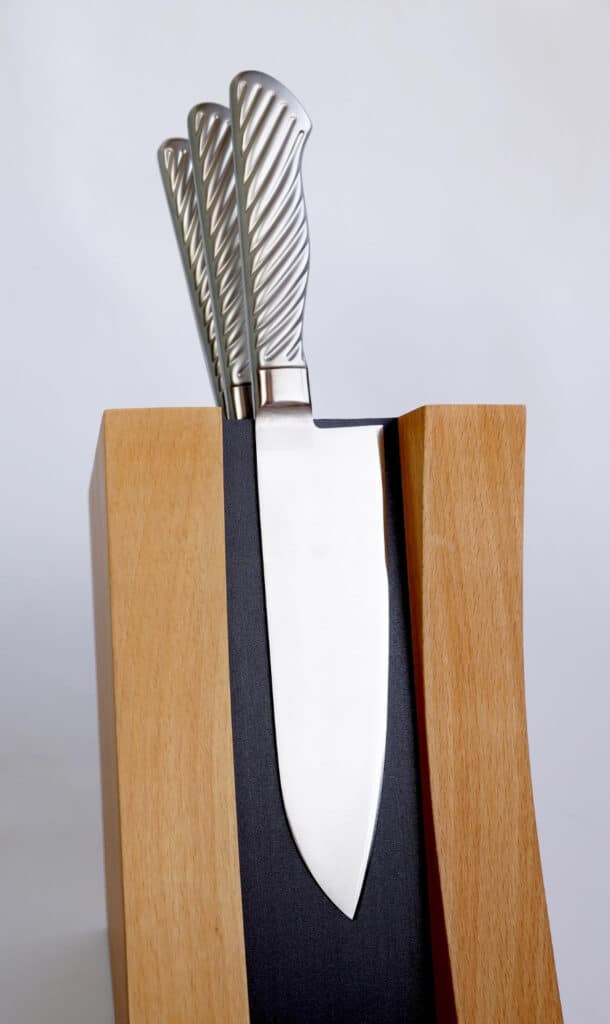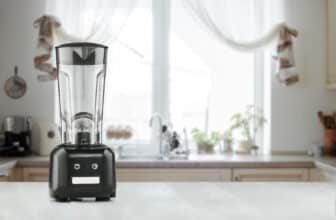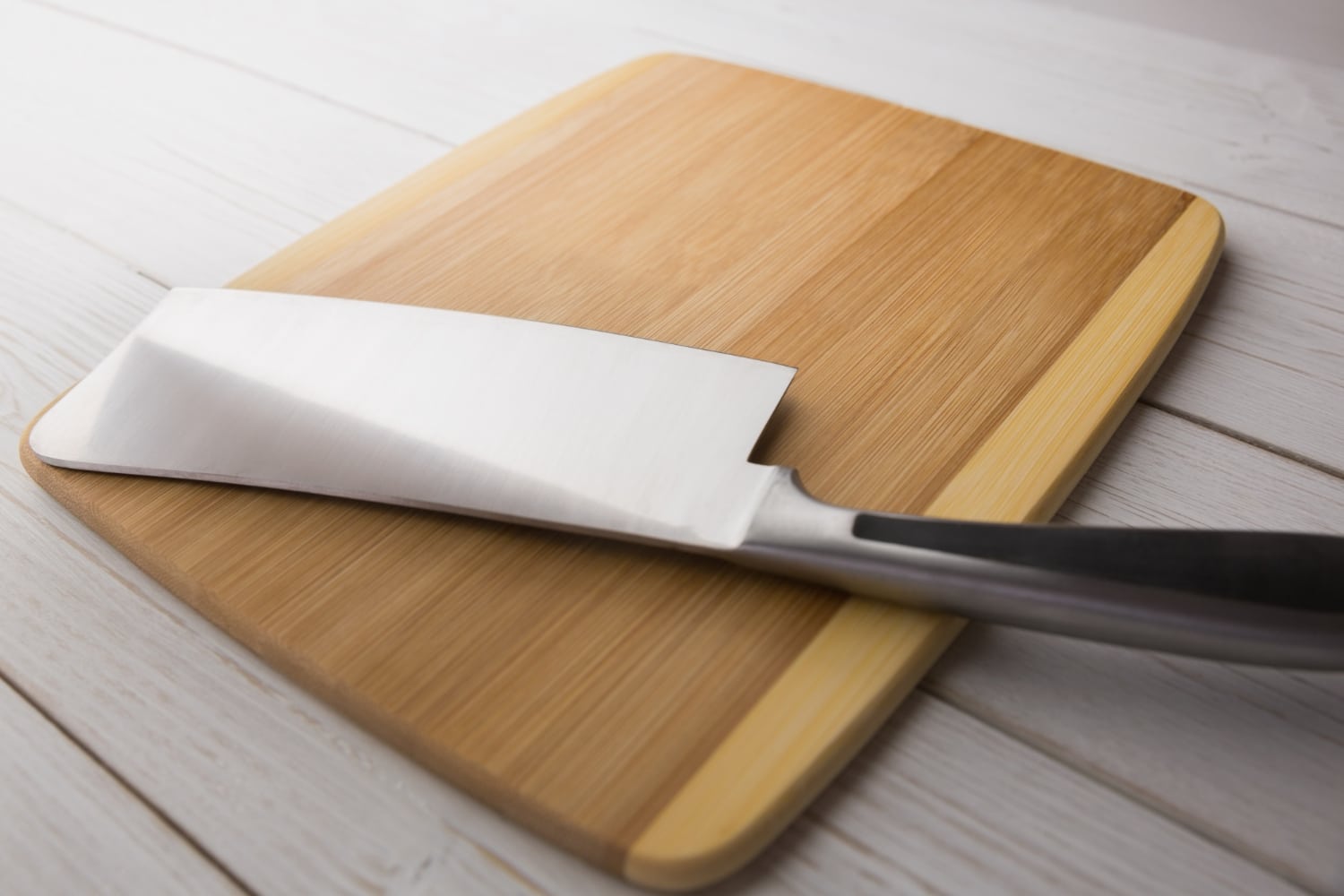
Is Your Kitchen Knife Keeping You Back? Find out the Best High Edge Retention Stainless for Kitchen Knives.
Sick of sharpening your kitchen knives endlessly? Imagine slicing juicy tomatoes, dicing pungent onions and carving soft meats without your knife ever losing its edge. The answer: high edge retention stainless steel, a godsend for aspiring chefs and professionals alike.
Walking the fine line between high carbon and stain resistance compounds, what exactly gives a steel edge retention superiority? And how do you select the right knife that will remain sharper for a longer period? In this ultimate guide, we break down high-performance kitchen knives into their best stainless steels with edge retention and the science behind it for how durable they are.
Whether it be learning about the factors that impact edge retention or comparing edge retention to other important knife attributes, you will be armed with the information to make an informed decision. No one can deny the kitchen’s place of pride in every man’s home, so sit tight as we discover the top high edge retention stainless steels for your kitchen knives and how they can make your culinary journey sharper and better!
- Blink At Our Top Selection:
- What is High-Edge Retention Stainless Steel?
- Top-Notch High Grade Edge-Retention Knives for Kitchen
- Best Selection According To People Demand:
- The Influential Factors Of Edge Retention Kitchen Knives
- Clear Comparison Of Edge Retention With Other Traditional Knives
- Choose the Best Stoned Edge Retention Knife
- Edge Retention Basics: What Makes One Steel Better Than Another?
- Does higher edge retention always means better?
- High Edge Retention Stainless Steel Knives in the Real World
- Final Words by Our Experts
- Who Are We: Why Listen To Us!
- How We Tested & Reviewed
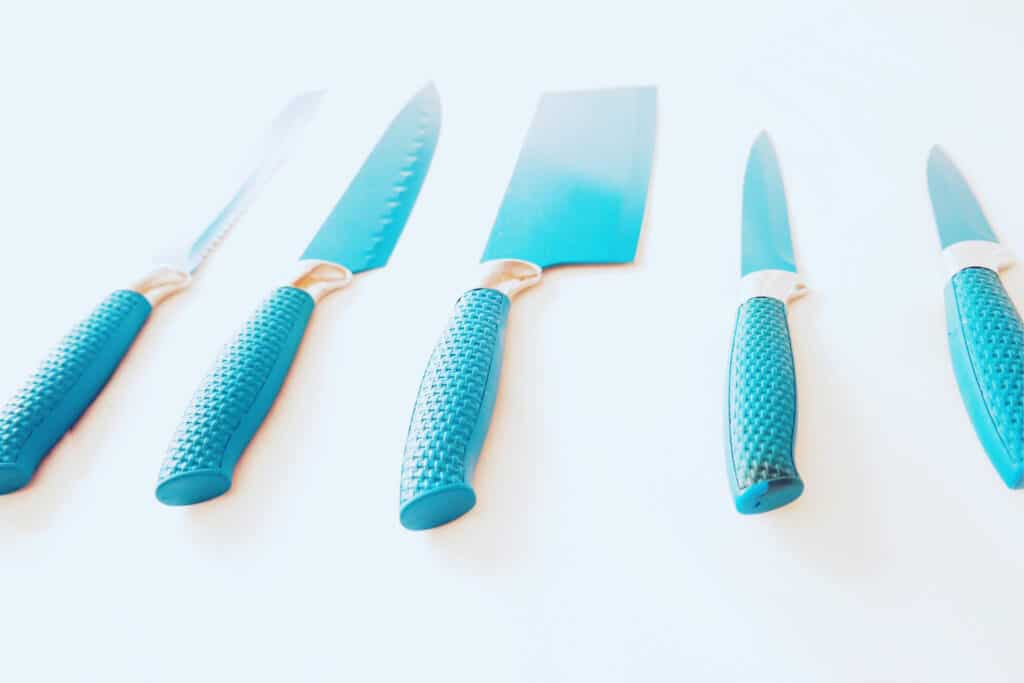
Blink At Our Top Selection:
1. KEEMAKE Japanese Chef Knife 8 inch – Sharp Kitchen Knife
2. J.A. Henckels Worldwide Vintage Hollow Edge Chef’s Knives
3. Ninja K62012 Foodi NeverDull Premium 12-Piece German Stainless Steel Knife
4. Amazon’s Choice: PAUDIN Nakiri Knife – 7″ Razor Sharp Meat Cleaver and Vegetable Kitchen Knife, High Carbon Stainless Steel
5. Amazon’s Choice: Kuisine Kitchen Chef Knife Block Set,High Carbon Stainless Steel Razor-Sharp Blade Ergonomic Handle
6. Amazon’s Choice: Upgraded Knife Set Premium Japanese 15 Piece High Carbon Stainless Steel Kitchen Knife Block Sets
7. Amazon’s Choice: 7 Inch Japanese Chef Knife, Ultra Sharp High Carbon Stainless Steel AUS-10 Kitchen Knife, Professional Santoku Knives
8. Amazon’s Choice: SHAN ZU Japanese Chef Knife 8 Inch, Hand Forged Kitchen Knife 7 Layers 9Cr18MoV High Carbon Steel
9. DDF iohEF Kitchen Knife Set, 4 Piece Professional Ultra Sharp Knives Set
10. 15-Piece Knife Block Set with Built-in Sharpener, Carbon Stainless Steel Kitchen Knives
11. Amazon’s Choice: PAUDIN Kitchen Knife Set // High Carbon Steel Professional Chef Knife Set with Ultra Sharp Blade
12. Amazon’s Choice: Japanese AUS-10 High Carbon Stainless Steel Chef Knife, Multipurpose Meat Vegetable Sharp Kitchen Knife
What is High-Edge Retention Stainless Steel?
What is this important characteristic for kitchen knives
To cut a long story short, high edge retention stainless steel is a type of steel alloy that helps to create razor sharp kitchen knives. Essential for professionals and home cooks alike, this kind of steel greatly mitigates how often a knife needs to be sharpened. When it comes to kitchen knives, nothing is more important than high edge retention to get the most out of all of your kitchen tasks with optimal efficiency and precision.
High edge retention steel properties
These steels retain their edge far more effectively due to an alternate composition and different structure. They usually have more carbon and other alloying elements such as vanadium, molybdenum or tungsten. As a result, it leads to the development of hard carbides in the steel matrix that resist wear and thus help maintain the knife’s edge. Also, high edge retention steels tend to be very hard and tough as well, hence allowing better durability while maintaining good flex.
Benefits over other knife materials
Benefits of High Edge Retention Stainless Steel Over Common Knife Materials The first and foremost aspect making it easier to use is a drastic reduction in the necessity for regular sharpening which tends to consume time when working in kitchen. Also, this steel holds its cutting capabilities reliably, making for consistent cuts over extended usage. It is low maintenance and can be used for many culinary applications, as it resists corrosion and staining unlike carbon steel. High edge retention steel also means that the knife will last longer over time, making it more cost effective in the long term.
Top-Notch High Grade Edge-Retention Knives for Kitchen
VG-10: Strength and durability via Japanese precision
VG-10 is a Japanese stainless steel known for its good edge-holding ability and sharpness in kitchen knives. This high-carbon vanadium steel has a unique balance of hardness and toughness, which is what you want in a knife that you’ll use every day. Its fine grain allows for razor sharp edges that last a long time.
S30V: Top tier performance for professionals
S30V is an American-made premium steel that many professional chefs have started using. S30V is famous for offering slightly better edge retention and wear resistance than similar steels and excels in holding an edge even in heavy use. Its innovative fusion of the alloy makes it an extraordinary steel for their knives in cutting and durability.
Balanced hardness and corrosion resistance CPM-154
CPM-154: A powdered metallurgy steel with excellent edge retention and corrosion resistance. Internationally made, this steel has a fine, consistent carbide structure yielding consistent performance and easy sharpening. This balanced properties of this material make it suitable for all kinds of kitchen knife works, from fine slicing to heavy chopping tasks.
M390: Best in class for ultrahigh edge retention
When specifically referring to M390, it is the apex of high edge retention stainless steels for kitchen knives. This Austrian-made steel is incredibly resistant to wear and corrosion, making it ideal for professional kitchens. M390 is also more difficult to sharpen, but its ability to retain an edge for the longest time possible is a reason why many knife enthusiasts as well as cooks whose cutting performance needs are at the maximum end of the spectrum love M390.
Best Selection According To People Demand:
1. Top Reviewed for Sharpness & Amazon’s Choice: PAUDIN Chef Knife, 8 Inch High Carbon Stainless Steel Sharp Kitchen Knife with Ergonomic Handle
2. Amazon’s Choice: KAWAHIRO Japanese Chef Knife, 210mm Black Forged Kitchen Knife with Tri-Ply VG-10
3. Best Rated: KAWAHIRO Japanese Chef Knife, 210mm Black Forged Kitchen Knife with Tri-Ply VG-10
5. Experts’ Choice: KEEMAKE Japanese Chef Knife 8 inch – Sharp Kitchen Knife with 440C Stainless Steel Blade, Professional Chef’s Knife
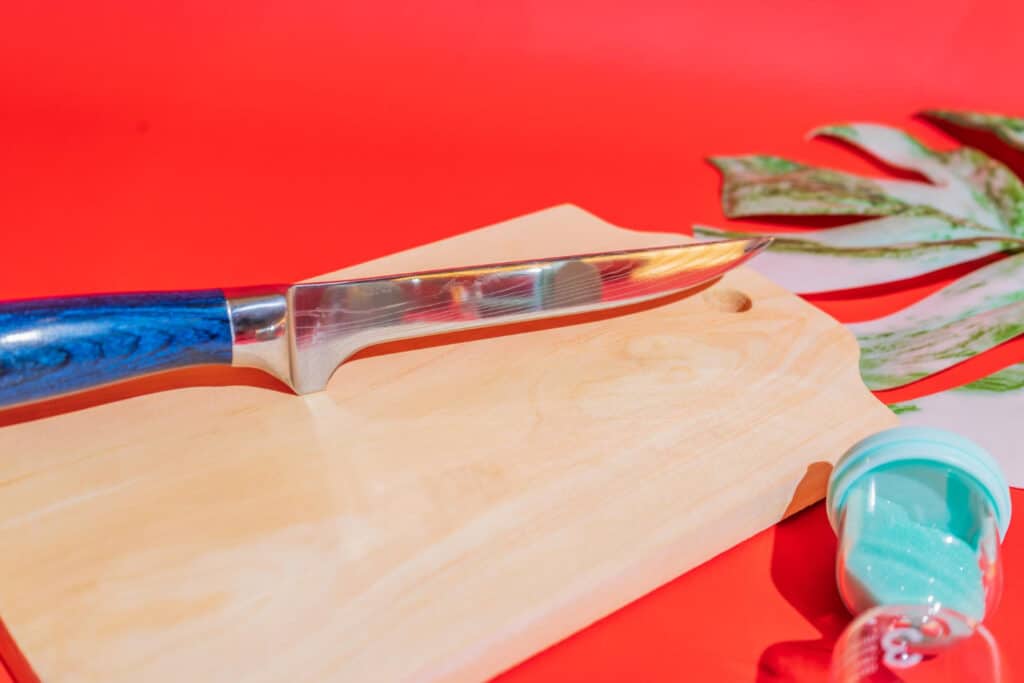
The Influential Factors Of Edge Retention Kitchen Knives
This is the list of its composition ( Fender Steel )
The make up of the stainless steel, as well as the heat treatment process, are very important factors in how well a knife holds its edge. High end stainless steels used for kitchen knives include carbon, chromium, vanadium, and molybdenum. This creates a hard carbide structure, enhancing wear resistance and edge retention.
Quenching and tempering are examples, but heat treatment further alters the steel’s microstructure. A well-balanced heat treatment allows for the right amount of hardness while still maintaining toughness; providing great edge retention without sacrificing overall knife durability.
Blade geometry and edge angle
A knife’s blade design is a key determining factor in edge retention performance. But a thinner, chiseled blade with a sharper edge angle will provide a keener initial sharpness, with the understanding that over time the edge may dull relatively more quickly than a thicker blade. On the flip side, a thicker edge with a more obtuse angle will give you better edge stability and retention, but it may not feel as sharp in the beginning.
Edge retention is also: affected by the grind type, ie — flat, hollow or convex. Every grind type varies the distribution of force along the cutting edge, and that affects how quickly the edge wears down during use.
Maintaining And Caring For Your Knives
When it comes to even the highest high edge retention stainless steel knife, proper care is need to maintain its performance. Regular honing realigns the edge, prolonging the periods between sharpening. However, when sharpening is required, it’s best to do it in a way that is correct to avoid damaging the blade.
Proper storage, like knife blocks and magnetic strips, prevents damage to the edge, too. Also, cutting on wood or soft plastic, not hard surfaces like glass or stone, preserves the knife’s edge. Having considered is edge retention affected by, let me compare this quality to some other important knife aspects.
Clear Comparison Of Edge Retention With Other Traditional Knives
Edge retention vs. ease of sharpening
Stainless steels with high edge retention typically compromise ease of sharpening. Although these steels can hold their sharp edge longer, they are also more difficult and time-consuming to sharpen when the time comes. This is because worn wheel steels are harder and more wear-resistant, making them more difficult to grind and hone. However, for many home cooks and commercial chefs, the advantage of needing to sharpen less regularly outweighs this disadvantage.
Balancing hardness and toughness
When talking about edge retention and what contributes to it, another factor that is very important to discuss is the tension between hardness and toughness. Hardest stainless steels materials tend to maintain an edge longer time but can also be more breakable and prone to break off. On the other hand, harder steels don’t always hold an edge as long, but they’re more impact-resistant and less prone to chip or break. Good edge retention and good toughness would be the ideal kitchen knife, and quite often such balance is between these properties.
Tradeoffs in Corrosion Resistance
Stainless steels with good edge retention often have higher percentages of carbon and other alloying elements, which can reduce their corrosion resistance. While still an alloy many people would consider “stainless,” these often have a higher potential for discoloration or staining than softer, more corrosion-resistant stainless steels. The downside is usually small unless corrosion might be a problem, but good care and maintenance programs will reduce this to a minimum. The slightly diminished corrosion resistance is more than outweighed by the vastly superior edge retention for the vast majority of users. Having covered how knife edge retention stacks up to other knife properties, let’s look at how to select the best high edge retention knife for your purpose.
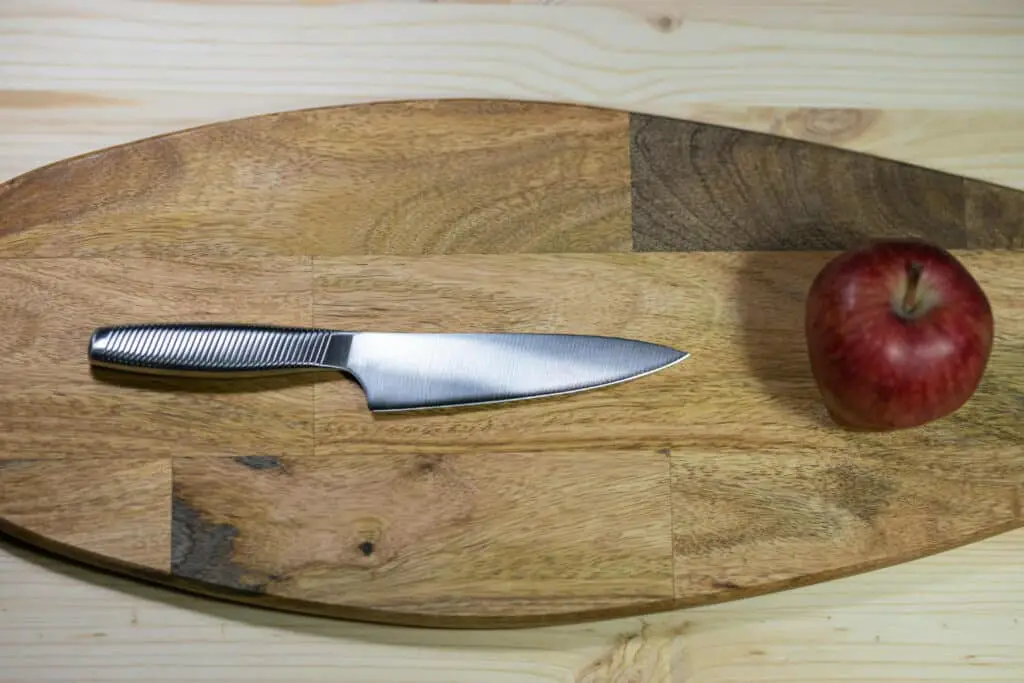
Choose the Best Stoned Edge Retention Knife
Know your cooking style and needs
To get the most out of a high edge retention knife, you should also make sure that it suits your own cooking style and needs. Are you a professional chef who needs it for precision cuts for hours at a time, or a home cook who cooks a few times a week? Your usual cooking frequency and what kinds of ingredients you typically cook with will determine your selection. If, for example, you regularly with tough meats or vegetables, the best knife for the job will be the one with the best edge retention.
Budget considerations
High-quality knives typically offer better edge retention over time, but this comes at a cost. Investing in a high-quality blade, however, will actually save money in the long term, as they will lose their edge much less quickly, require less sharpening and provide years of excellent service. Determine your budget and contrast it with the knife’s potential longevity and performance.
Handling and comfort factors
How a knife feels in your hand is important both for comfort and for safety. Choose a knife with a handle that feels grippy and comfortable for prolonged use. The balance (or feel) and weight of the knife should also be to your liking. Indeed, some cooks like heavy knives for control while others favor light; both reduce fatigue over long cooking sessions.
Brand reputation and warranty
Last but not least, look into the brand reputation and warranty offered by the knife company. Reputable brands have a reputation for making good knives and may have a better customer service history. A good warranty means peace of mind and helps protect your investment. Check customer reviews and expert testimonials to get a sense of the brand’s reliability and the knife’s performance in actual use.
Edge Retention Basics: What Makes One Steel Better Than Another?
The hardness scale and the impact on edge retention
Steel Hardness And Edge Retention Kitchen knives’ edge retention is also impacted by the hardness of the steel. Measured on the Rockwell C scale (HRC), harder steels tend to hold an edge longer. The range of hardness for fast fading kitchen knives is usually between 58-64 HRC. That combination is hard enough to withstand deformation and hold an edge, but not so brittle that it snaps under stress.
The harder it is, the more force a pure, simple edge must apply to deform it, meaning it’s less likely to fracture micro-rolls or folds along the edge as you use it. This resistance to deformation results directly in enhanced edge retention. Super hard steels (HRC:65+) may be too brittle for real kitchen use, resulting in excessive chipping or cracking.
The significance of carbide content at high retention
Carbides are very hard particles created by the combine of carbon and certain alloying parts in the process of steel-making. It is these small structures that have a big impact on what a knife can hold an edge with. Crystalline structure, and quantity and distribution of carbides through the steel matrix define edge life.
High-performance stainless steel contains a higher portion of carbide-forming elements (e.g. vanadium, molybdenum, chromium). These components form hard, wear-resistant carbides that act like micro anchors locked in the steel, resisting abrasiveness and preserving the edge. Not only does it need to be plentiful, but the carbides also need to be an appropriate size and distribution. Overall performance tends to be higher with smaller, evenly distributed carbide than with large, unevenly dispersed carbide. After that little science lesson on edge retention, time to ask — is higher edge retention always better in kitchen knives?
Does higher edge retention always means better?
Scenarios in which edge retention might not matter as much
Although high edge retention is typically a desirable trait for kitchen knives, there are instances when it isn’t the main focus. For softer foods, such as ripe tomatoes or tender herbs, a knife that doesn’t retain its edge well can work just as effectively. In fact, a somewhat softer steel might let you create a thinner edge that slices through these foods more easily. Campaigns that only slice once in a while — maybe you prep a few pieces of meat every now and then, or do some light chopping of vegetables — also won’t require super-extreme edge retention.
Maintaining a balance of edge retention and other features
When choosing a kitchen knife, edge retention is just one of many qualities to balance together. Corrosion resistance is especially critical in the kitchen, where knives are often exposed to moisture and acidic foods. For all-day-to-day use, a knife with somewhat worse edge retention but better rust resistance may be better.
Ease of sharpening is another factor to balance against edge retention. Such extreme edge retention steels are notoriously tough to sharpen at home (and often require professional sharpening services or EC-level sharpening equipment to tackle). For the home cook who would rather keep their knives themselves, one that holds a good—but not excessive—edge, and can be made sharp again easily, may be the better option. In the end, the perfect knife is a balance of edge retention, corrosion resistance, maintenance, and is unique to each user’s preferences in the kitchen.
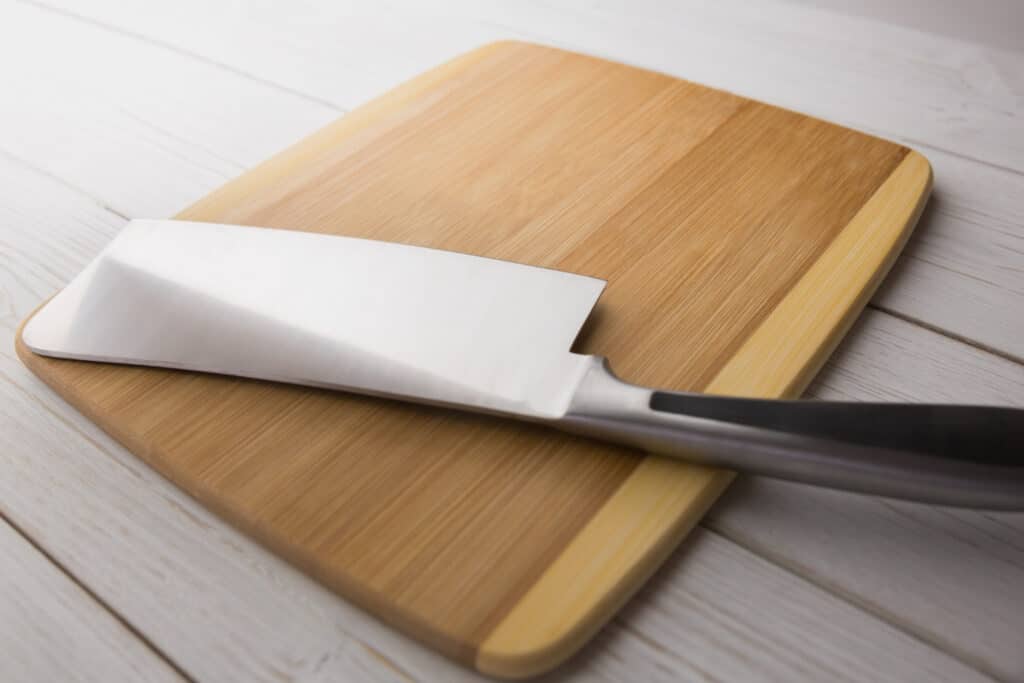
High Edge Retention Stainless Steel Knives in the Real World
High edge retention stainless steel knives have performed excellently across different cuisine accouterments and have shown their worth by providing enough cut quality both in professional and home-based kitchen setups. These knives provide an edge that lasts far beyond those on which the steel wears down after just a few hours of heavy use in the kitchen, further increasing brigade efficiency by limiting downtime for sharpening. Chefs love that they can prepare food in volume without sacrificing precision or performance.
For home kitchens, these knives are tough and convenient. And professional chefs benefit from their long-lasting edge, which means less time spent on maintenance and cutting performance over the long haul. Whether slicing vegetables, deboning meat, or preparing intricate garnishes, high edge retention knives stay sharp, making cooking tasks easier and more pleasurable.
These knives are also useful for professional settings, like culinary schools or catering services. Also, their ability to handle rough treatment and still keep a sharp edge makes them perfect for teaching correct cutting methods and working with different ingredients. Many of these knives are high-quality, consistent performers that help professionals hone their work without worrying about their tools.
What are High Edge Retention Stainless Steel Knives Used for? High edge retention stainless steel knives create reliable, efficient, and superior-quality knives ideal for home cooks as well as chefs in culinary settings.
Final Words by Our Experts
Investing in a stoned edge or high edge retention knife means you are investing in longevity and exceptional performance. That makes it a super collection for both home cooks and professional chefs. Its strong stainless steel robust construction gives everyone superior performance when cutting something in the kitchen. Its high quality properties make them different from others. So it is crystal clear that investing in high edge retention best high edge retention stainless for kitchen knives can enhance your culinary cutting game.
As our experts tested this high edge retention kitchen knife in different aspects, after their satisfaction they confidently suggested this knife for home cooks. Professional chefs also used this knife with great proficiency. Also this high edge retention knife holds sharpness for a year. It is also corrosion free and rust resistant. It enables such a very ease of cleaning. If you carefully calculate your all needs and if you’re investing in a high edge retention stainless steel knife then you are investing in kitchen assets. This kitchen knife will surely serve you perfectly for many years.
Who Are We: Why Listen To Us!
Modern Kitchen Gear was established by an enthusiastic team. Who are very experts in the field of kitchen accessories. As a reliable source for kitchen accessories reviews and advice. Our expert team members often do super shop visits. Some of them get real time experience from their usage. They write down the benefits and what sets apart the product specifically. Our team members also carefully listen to the expert and note down all the matters.
We have dedicated people to test products too. For the purpose of a valuable analysis to guarantee that we deliver real and transparent thought to our customers. Modern Kitchen Gear hires professionals for delivering best quality and valuable articles. Our expert content writers and copywriters then write it very carefully. To express the real outcomes that help readers to make informed purchasing decisions.
How We Tested & Reviewed
With the aim of writing real and comprehensive reviews our team goes through different sorts of product testing. They tested and used them in different ways for several days or even for a few months. These real-life testing proved that all of the outcomes were beneficial and very useful for your daily application of your daily routine.
Grace and Clover, our two review specialists, tested these items in different contexts. If the item passed their first taste then they were moved to the second step or detailed testing. This combination of testing processes gives a beautiful balance on the product reviews. From that our reviewers get more confidence in those products. From that belief they strongly suggest those specific products for you.
Reviews were led by Grace Morgan, our Senior Product Review Specialist, who used his analytical expertise as he analyzed durability, non-slip properties and ease of cleaning. This gave him the opportunity to understand all of the features and functions for each product inside and out.
Clover Jace, Junior Product Reviewer helped him out with a fresh lens of comfort, use and design. His focus on detail exposed underlying strengths and opportunities for improvement.
